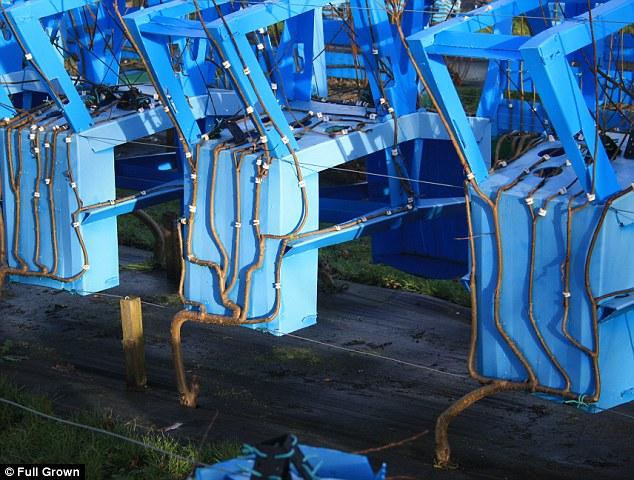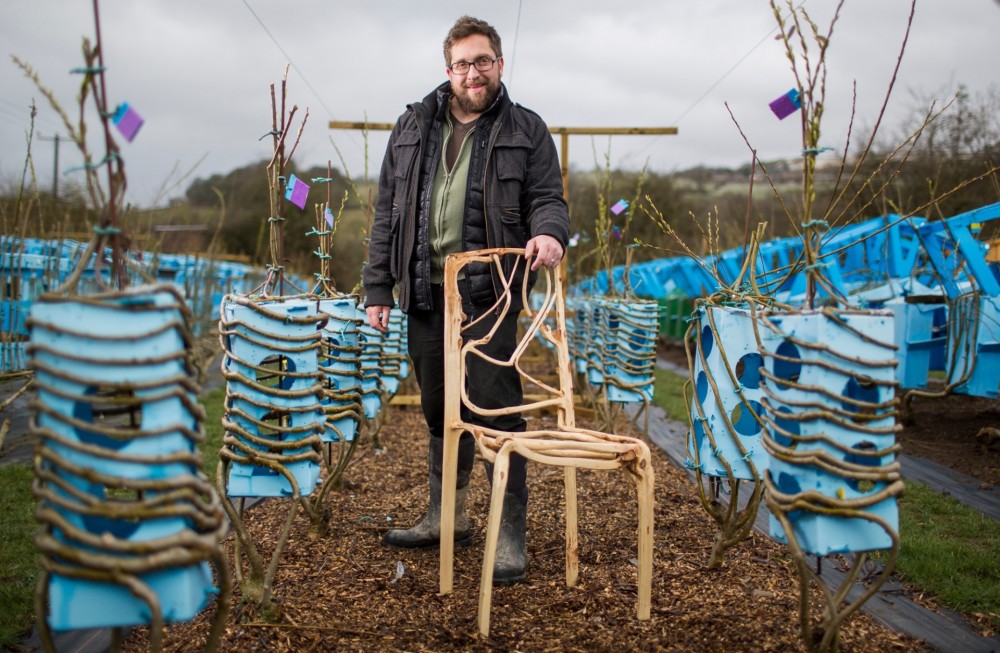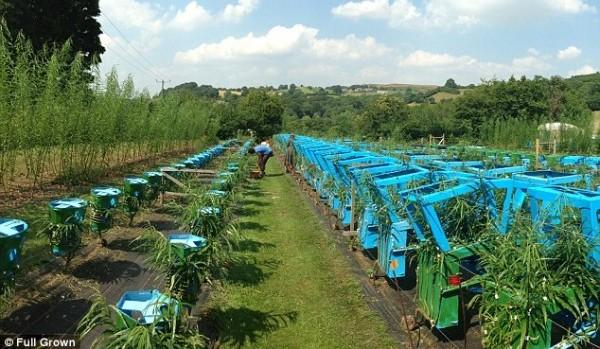When you think 3D printed furniture I’d imagine most people picture plastic tables and chairs in garish colors, or fragile plastic parts glued together. But in actuality, there have been a lot of interesting advancements made in 3D printing home furnishings in the last few years, from large-scale 3D printers capable of producing entire pieces of furniture in a single piece, to filament made from real wood that can be sanded and stained just like the real thing. Wood filament even smells like wood when it is being used.
These new 3D printing techniques are really cool and have the potential to reduce or virtually eliminate waste and allow for previously impossible geometries. They are also very new, practically untested, and still being perfected. And while we certainly should continue exploring these new techniques, we should also remember that we already have access to the world’s best 3D printer: Mother Nature.
While constructing driftwood furniture, British designer Gavin Munro came up with a rather novel economically friendly method for mass producing natural wooden furnishings. By using specially designed molds, Munro trains trees to grow into specific shapes like tables, chairs, mirror frames, and lampshades.
 By tending the growing furniture daily, he can form the soft, newly grown branches into specific shapes. Then once the shapes start to take form, he grafts the branches together so they grow into sturdy, seamless joints that are vastly superior to joints connected with glue or nails. Once the furniture is grown into the desired shape and has matured, Munro harvests them and allows them to season and dry before planing and finishing the wood to reveal the grain.
By tending the growing furniture daily, he can form the soft, newly grown branches into specific shapes. Then once the shapes start to take form, he grafts the branches together so they grow into sturdy, seamless joints that are vastly superior to joints connected with glue or nails. Once the furniture is grown into the desired shape and has matured, Munro harvests them and allows them to season and dry before planing and finishing the wood to reveal the grain.
“When you look at it from a manufacturing point of view and from a design point of view, it actually makes total sense. Why would you grow trees, chop them down with all the faff? Why don’t you just grow the shape you want and it is eminently scalable? You can make thousands of these in the same way as you can make 10, but each one is unique,” Munro recently explained to The Guardian. “Why do we need to bring all of these things together – chop the trees down, make them small, stick them back together again. We can just start from growing the tree from the beginning.”
The process has been dubbed Botanical Manufacturing and could, realistically, be used to mass produce ecologically friendly and highly sustainable furniture. Munro started working on his technique about 10 years ago, and currently his farm is preparing to harvest his crop of over 400 various tables, chairs, and lampshades in October with the products set to go on display next year, and the first pre-orders filled in 2017.
Here is some video of Munro showing off his work and farming techniques:
And while the four to six years it takes for each pieces seems like a long wait, it isn’t really when his crops are staggered to mature every season. On a large scale, fresh pieces of naturally grown furniture could be harvested regularly. And because Munro reuses the existing root system when he begins to regrow the next batch, the branches will grow even faster and stronger. Currently he is tending to crops consisting of a fast growing willow, but he is experimenting with ash, sycamore, hazel, crab apple, and oak trees.
Munro’s natural furniture company is called Full Grown has already created several basic furniture designs, but he is experimenting with new shapes and styles, like a chest of drawers and book shelves. You can see him talk more about his methods on a recent TEDx talk that he gave here:
While almost all of Full Grown’s first crop has been pre-ordered, what pieces will be available will sell for £2,500 (about $3,600) for a chair, and lamp shades costing between £1,000 and £1,500 ($1,500 and $2,200) each. And while those prices aren’t exactly affordable, they’re not astronomical for a piece of custom furniture. Plus, Munro said that his system is completely scalable, and once larger crops are harvested and processed those prices should drop considerably.
Munro suggests that his farming system is highly sustainable and can create an entirely new, economical method for mass producing furniture with little to no environmental impact. But what do you think, would you purchase naturally grown home furnishings, or will you stick to traditionally manufactured pieces? Tell us about it over in the Natural 3D Print Wood Furniture forum thread on 3DPB.com.
Subscribe to Our Email Newsletter
Stay up-to-date on all the latest news from the 3D printing industry and receive information and offers from third party vendors.
You May Also Like
3D Printing News Unpeeled: A $3000 SLS System, Construction Subsidies and Parameters
The Housing Affordability Crisis is one of Canadian President Trudeau’s biggest issues. Now the government has made subsidies available, including scaling new technologies, 3D printed housing and libraries of reapproved...
“Bundled Light” Enables High Quality Plastic 3D Printing from LEAM
Naturally, we expect current 3D printing methods to continuously improve, but it continues to do so in the most surprising ways. The latest development comes from LEAM, a startup spun...
Each to Their Own: Exploring Creality’s Latest Ender Trio as the Company Strengthens Its Commitment to 3D Printing Advocacy
Creality has reaffirmed its commitment to promoting 3D printing. The launch of the Ender-3 V3 SE, Ender-3 V3 KE, and Ender-3 V3 showcases the company’s dedication to catering to diverse...
3D Printing News Briefs, March 23, 2024: AM in the US Coast Guard, Navy, & More
In today’s 3D Printing News Briefs, we’re discussing the use of 3D printing in various branches of the military, including the U.S. Coast Guard, the U.S. Navy, and the German...



































